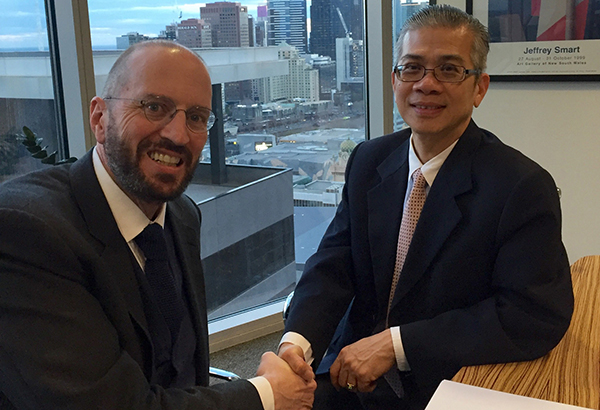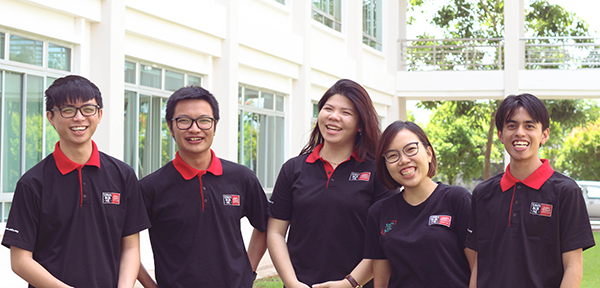ENTREPRENEURS — they regularly make headlines from Jack Ma to Richard Branson.
Books charting their journey hit the bestseller list, fuelled by curiosity and people looking to be inspired by leaders. Everybody can dream of making it big but what makes a big idea a successful business?
TV-shows like ‘Dragon’s Den’ or ‘Shark Tank’ will tell you having a great idea is not enough — you need a sound business plan, money and a network.
The Global Entrepreneurship Monitor (GEM) studies entrepreneurship globally to provide insights into the entrepreneurial phenomenon. GEM advises key organisations like the UN, World Economic Forum and the World Bank. It also includes research from Malaysia and a recent report expressed concern about the lack of business start-ups here.
It concluded that Malaysian entrepreneurs face a challenging environment as there are restrictions on market openness, limiting entrepreneurial activity. It also went on to highlight the issues around entrepreneurship education and research and development which is where universities could play a big role.
The state government is taking this to heart with exciting developments in its innovation ecosystem, seeking to break these barriers and issues, and support the new generation of entrepreneurs to drive big ideas, aimed at supporting economic development and improving social outcomes.
At the macro level, this includes support for the Borneo744 project.
Abandoned warehouses and industrial buildings are given a new lease of life, becoming more than trendy residential addresses. Initiatives to make them a cultural and community centre has seen success like the Westergasfabriek complex in Amsterdam, built in 1885 as a gas depot to provide street lighting for the city. Another recent success there has been De Hallen, a tram depot from 1902.
In Malaysia, the Hin Bus Depot Art Centre in Penang has been successful in attracting a creative and entrepreneurial audience. Kuching’s Borneo 744 also has the same ambitions — to transform an abandoned public works mechanical warehouse into a hub for the creative economy of Kuching.
While these initiatives have the support of the local governments, the businesses which operate out of them have to compete in a free-market economy. Kuching’s Borneo744 is being developed in the same vein under the Government’s National Blue Ocean Strategy initiative to provide the requisite infrastructure towards supporting entrepreneurship and creative development in the state.
What sets it apart is that businesses will also have the knowledge support they need to become an entrepreneurial success. The Malaysian Global Innovation and Creativity Centre (MaGIC), based in Kuala Lumpur, will open its second branch here, offering programmes and co-working spaces.

Finico Investments CEO Marcus Sheeran with Dr Eryadi Masli from Swinburne Melbourne
Significant role
This is the area where the education sector should and can play a significant role. Industry engagement is already a big theme for modern universities. Beyond the broader initiatives, implemented by the government, the need to connect the education sector with the entrepreneurial sector has become necessary and critical.
Without an active platform for fostering young entrepreneurs through the education system, any broader initiatives risk failure as the education system provides a pathway for encouraging the next generation into entrepreneurial activities as well as equipping them with the necessary skills and knowledge to engage in entrepreneurial opportunities.
Swinburne Sarawak has been engaging with the industry to enable its students to see their work flourish in the real world. By partnering with Microsoft and the Malaysia Digital Economy Corporation Sdn Bhd (MDEC), its multimedia design students learn directly from industry practioners about the latest developments in their field.
Inspired by the folklore and rituals from Borneo’s indigenous communities, students are successfully translating them as concepts for their gaming apps, capable of competing at an international level.
In their game ‘Tou: The Sacrifice’, which won the Microsoft Imagine Cup Asia Pacific in 2015, the game concept was inspired by folklore from the Melanau community where a little girl gets lost in the forest. Players have to search for clues and solve the puzzles to proceed to the next level.
Another game — ‘Beads of Borneo’ — engages the audience to play, at the same time explaining the symbolism of beads. In Borneo, the pattern of the beads is symbolic and believed to hold spiritual and healing powers. In this game, players need to collect beads within a timeframe in order to explore the meaning of each bead. These games have already been published in the Microsoft store but how can a good idea be translated into a business success story?
Geopolymer — green cement
In its commitment to develop sustainable technology, Swinburne’s science and engineering researchers have come up with a green cement, called geopolymer. The production of cement releases a lot of greenhouse gases, making it one of the top five pollutants.

Hsiao Yun Leong and Dr Dominic Ong developed the geopolymer cement.
Roughly one ton of cement releases one ton of greenhouse gases! Using industrial by-products such as fly-ash and iron slag, and binding them with an alkaline solution, gives us a better alternative to ordinary cement. Australia’s Wellcamp Airport was mainly built, using a geoplymer, developed by a private company, making it the greenest airport ever built.
Sarawak’s geopolymer is even stronger than ordinary geopolymer because of the unique nature of the fly-ash. But universities cannot produce the 70,000 tons of geoplymer needed in Wellcamp airport.
Both domestic and international partnerships are important for seeing these innovative ideas, translated into business success. And in an effort to guide students, staff and alumni from great ideas to successful businesses, Swinburne Sarawak is launching a business incubator programme. This is being established with its partner (Finico) Investments Pty Ltd, an Australian-based investment company.
This new incubator will not only provide financing for new start-ups but also access to relevant expertise and international markets. This is what will provide the difference in creating an entrepreneurial environment that both supports the introduction of new start-ups with the potential for high growth, and also the ability to take advantage of the Asean market where we are offered with over 630 million potential consumers.

The Start scene for the game Tou.
Problem of model
The conventional incubators offer space, office facilities, administrative services and, occasionally, some small funding in exchange of minor equity
stake in the start-ups. The problem for this model is that the start-ups’ cash burn rate is high and quickly depletes their cash resources.
The start-ups do not have enough time to secure the next round of funding as they are still busy working on their prototype or business model or try to scale up their operations. That is one of the reasons why within three years, 92 per cent of start-ups have failed.
Of those that failed, 74 per cent was due to premature scaling, which means spending money on marketing, hiring and such like, either before the company found a working business model (the company acquires users for less than the revenue they bring) or in general, was spending too fast while failing to secure further financing.
Startup Genome Report Extra on Premature Scaling is a project co-authored by Berkeley & Stanford faculty members with Steve Blank. The report analysed 3,200 high growth web/mobile startups.
The Swinburne Sarawak and Finico Investments’ incubator model is a collaborative approach to advocacy for and funding of early-stage companies, which is essential for their growth. In this model, in addition to traditional functions of incubator, we also include the financiers at the early stage to secure the first round and second round of seed-funding for start-ups.
Finico Investments will also assist to find the third-round of funding to reduce the mortality rate of start-ups due to financing gap and premature scaling, according Swinburne Sarawak incubator programme creator Dr Eryadi Masli.
This incubator will provide an invaluable pathway for entrepreneurs within Sarawak to leverage from the education sector into broader initiatives, established by the government and industry to support start-ups.
With a clearer basis for turning innovative ideas, fostered within the higher education sector of Malaysia, into entrepreneurial new ventures, some of the major barriers, identified by recent reports, can be overcome.
Innovations, such as those highlighted above, need support, considering their commercial use and translation into successful business start-ups with the education sector establishing support infrastructure such as what Swinburne is doing.
Dr Jerome Donovan, senior lecturer in Entrepreneurship and Innovation at Swinburne Melbourne, is a visiting research fellow at Swinburne Sarawak.

The award-winning multimedia students.


